no, b/c when you make scenes, 16 channels are control PER fixture. So you set one light, get off the fixture, now onto the next. You have 16 per fixture.
I have done it. Go get your obey 40 out. You will see.
Maybe it's time to call Chauvet.
Kind of true. For this specific controller, you are 'allowed' up to 16 channels per fixture button on the controller. It is NOT per fixture. It IS per fixture 'button'. So we understand, you have a Core Par, which is 8 channels and (2) Freedom Par's, each 5 channels. Do you want them each to respond differently? Or the same?
As a test, what happens if you put both Freedom Pars on - as separate devices?
Logically, you might be able to setup 2 individual devices and get them to both respond - but why would you want to do that if you're not creating a scene for them? Why would you want to have to manually recreate this look each time?
BTW, from the manual:
-----------------------------------------------------
Programming Two Products
Programming products is sending DMX values to them to control them and create a look. The general steps for programming a product are as follows:
1. Enter Program mode.
2. Press one or more <FIXTURE> buttons to select one or more products.
3. Move the channel faders to control the product or products —use <Page Select> to move between fader pages.
4. Repeat steps 2–4 as needed for other products.
5. Save the look into a scene. See Creating A Scene.
6. Exit Program mode.
Note: If the look is not saved to a scene it will be lost when Program mode is exited.
The specific instructions below describe programming a 12-channel product on
<FIXTURES 3> and a 15-channel product on <FIXTURES 5>.
1. Enter Program mode.
2. Press <FIXTURES 3>. Its LED comes on and it is selected.
3. Move any of the 8 channel faders to send DMX values to the first 8 channels of <FIXTURES 3>. The light responds to the faders.
4. Press <Page Select>. The Page B LED comes on and the Page A LED goes out. Fader Page B is now active.
5. Move any of the first 4 channel faders to send DMX values to the last 4 channels of <FIXTURES 3> and the product responds to the faders.
6. Press <FIXTURES 5>. Its LED comes on and it is selected. Now both lights are selected.
7. Press <FIXTURES 3>. Its LED goes out and it is no longer selected. Now only <FIXTURES 5> is selected.
8. Press <Page Select>. The Page A LED comes on and the Page B LED goes out. Fader Page B is now active.
9. Move any of the 8 faders to send DMX values to the first 8 channels of <FIXTURES 5>. The light responds to the faders.
10. Press <Page Select>. The Page B LED comes on and the Page A LED goes out. Fader Page B is now active.
11. Move any of the first 7 faders to send DMX values to the last 7 channels of <FIXTURES 5>. The light responds to the faders.
12. Repeat steps 2–11 as needed for other products.
13. Save the look into a scene. See Creating A Scene.
Note: If the look is not saved to a scene it will be lost when Program mode is exited.
-----------------------------------------
As a test, setup your Freedom Par's - with addresses of 001 and 006. You should be able to fully control both devices separately on Fixture 1, Channels 1-10.
Last edited:


